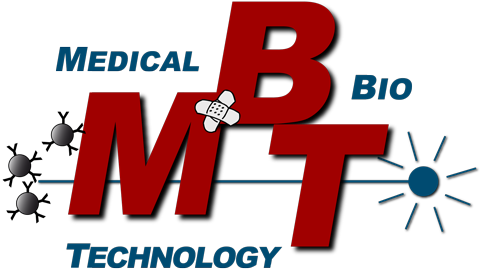Open Positions
Application
We appreciate your interest in our Institute. Even if there are no available graduation topics explicitly listed below, we welcome your unsolicited application.
Currently we do not offer any explicit PhD projects.
MyoRobot 3.0
The MyoRobot is FAU’s automated biomechatronics platform for quantitative single-muscle-fibre biomechanics. It integrates precise actuation, real-time force control, and optical analysis to study how skeletal muscle tissue generates and regulates force under physiological and pathological conditions.
The current MyoRobot 3.0 generation introduces advanced imaging, automation, and data analysis modules, pushing toward fully integrated opto-biomechatronics for translational muscle research.
We offer several Bachelor’s and Master’s thesis projects contributing to the ongoing system upgrade and validation:
i) Intelligent Analysis Algorithms for Biomechanics Data (BA / MA)
Develop and apply algorithms for automated data analysis in MyoRobot experiments.
Possible tasks:
- Improve smoothing algorithms for force data readouts and optical readouts (diameter and sarcomere length)
- Extend the range of application to yet missing recording protocols
- Work on an homogeneous interface within the MyoWizzard to access and carry out data analysis for users
ii) Fluorescence Optics and Biological Validation (BA / MA – currently unavailable)
Design and validate the optical subsystem for integrated fluorescence imaging of live muscle fibres.
Possible tasks:
- Integrate light sources, filters, and detectors for calcium, redox or fibre type imaging
- Validate optical signal quality using known biological markers and fluorophores
- Synchronize optical and mechanical readouts within the LabVIEW framework
iii) GUI and Backend Development in LabVIEW (MA)
Streamline the MyoRobot software environment (MyoWizzard) for scalability and reproducibility.
Possible tasks:
- Refactor existing LabVIEW code modules into a unified architecture
- Hunt for bugs and exterminate them
- Implement standardized interaction routines
- Document and version-control code for long-term maintainability
iv) Mechanical Re-Design under Good Manufacturing Practices (MA)
Improve the mechanical robustness and precision of the MyoRobot setup based on civil-engineering design principles.
Possible tasks:
- Reassess mechanical layout and tolerance chains
- Select industrial-grade materials and fittings for precision alignment
- Develop a unified CAD model
- Prototype improved components
- Make it a good-looking ‚product‘
[PDF]
v) Automated Stretch-Correction via Image Detection or Object Tracking (MA)
Develop a vision-based correction loop to compensate sample drift and stretch artefacts during experiments.
Possible tasks:
- Implement initialization routines for the camera to detect force transducer and voice coil position
- Automate computation of the stretch-correction speed
- Explore whether image cross-correlation is needed to modify stretch-correction speed
- Potentially: link the correction signal to actuator feedback in real time
- Validate precision during dynamic stretch protocols (stretch-jumps and stress-strain curves)
vi) Auto-Focus Implementation through Contrast Maximization (MA)
Automate optical re-focus during biomechanics function assessments.
Possible tasks:
- Compare focus metrics (e.g. Laplacian variance, contrast optimization, FFT-based)
- Implement closed-loop control for z-axis (vertical) adjustment
- Integrate the autofocus routine into the MyoRobot GUI (MyoWizzard)
- Validate focus stability during stretch–release and contraction experiments
vii) Validation of a Ventilated Light-Proof Black Box for Stretch Experiments (BA / MA)
Evaluate the performance of the newly developed light-proof enclosure for optical biomechanics testing.
Possible tasks:
- Assess light shielding and airflow efficiency during continuous operation
- Quantify the shielding efficiency of the box (vs. no box) against dust and fluff impeding optical detection accuracy
- Compare image quality in with and without box by dynamically recording fibre diameter changes in stretch protocols
All work packages can be tailored to specific needs/wishes, freely combined and can include biological/physiologically-themed questions on muscle fibre biomechanics
For further information please contact Dr. Michael Haug
Tissue Regenerator
The Tissue Regenerator project at FAU aims to revolutionize in-vitro skeletal muscle regeneration through a new concept called Adaptive Tissue Engineering – combining automated workflows, real-time monitoring, and intelligent control strategies.
Current manual decellularization and recellularization methods often lack reproducibility and rely on destructive end-point tests. Our goal is to develop a smart bioreactor system that enables continuous, non-destructive process monitoring to advance regenerative medicine toward clinical translation.
We are offering thesis opportunities contributing to different modules of this system:
i) Electro-Mechanical Stimulation Chamber
Design and prototype a chamber for functional conditioning of muscle tissue via programmable electrical and mechanical cues.
Possible tasks:
- Define design requirements for electrical and mechanical stimulation
- Develop CAD models for the stimulation chamber
- Build and test a prototype with programmable stimulation protocols
- Explore integration with perfusion and monitoring systems
- Validate usability with cell culture or isolated muscle tissue
ii) Centre-of-Mass Tracking for Decellularization Monitoring
Develop an image-based system to track 3D sample geometry and centre-of-mass changes during perfusion decellularization.
Possible tasks:
- Identify suitable camera hardware (e.g., 360° rotation setup vs. 3D camera)
- Establish image acquisition and processing pipelines in Python
- Optimise background extraction and object detection
- Extend or develop algorithms for 3D reconstruction
- Validate COM tracking during perfusion decellularization
iii) Real-Time Flow-Through Sensor Module
Integrate miniaturized sensors and optical tools for inline monitoring of key biochemical markers in tissue processing.
Possible tasks:
- Design and prototype a microfluidic flow cell
- Integrate inline sensors (e.g., miniaturized conductivity sensors)
- Implement UV-VIS or IR spectroscopy for real-time detection of DNA, proteins, or surfactants
- Correlate sensor output with endpoint histology and biochemical assays
- Explore closed-loop feedback for automated process control
All projects offer hands-on work at the interface of mechanical design, biosensing, and tissue engineering, with room for your own ideas and interdisciplinary collaboration.
For further information please contact Dr. Jonas Thiele
If no explicit Bachelor’s projects are listed here, reach out to our group leaders to inquire for possibilities.

